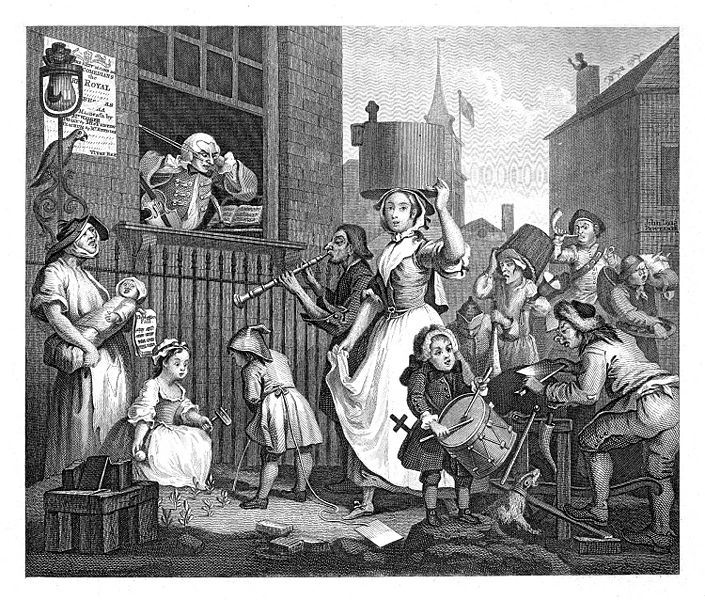Schwarz
View current page
...more recent posts
art since 1900: modernism, antimodernism, postmodernism
vol one1900-1944 and vol two 1945 to the persent
To grasp the distinctive character of Art Since 1900, it is worth briefly retracing the evolution of Krauss's ideas. Her first book, published in 1971, was on the sculpture of David Smith, an artist championed by her mentor, Clement Greenberg. But Krauss located the originality of Smith's work in psychological and philosophical issues that had nothing to do with Greenbergian formalism, Krauss argued that, whereas traditional sculpture presented figures and objects as forms radiating out from a hidden "core," analogous to the hidden self of consciousness, Smith shifted to a contingent, additive mode of composition, challenging not just conventional esthetics but also the Cartesian idea of the mind-body relationship. (1) Krauss expanded on this premise in her 1977 book, Passages in Modern Sculpture, a selective history tracing the medium's evolution from Rodin to Minimalism. Here she argued that the achievement of Minimalism was "to relocate the origins of a sculpture's meaning to the outside, no longer modeling its structure on the privacy of psychological space but on the public, conventional nature of what might be called cultural space." (2) As Krauss explained, Minimalist artists were influenced in this direction by a variety of sources, from Ludwig Wittgenstein's attack on "private language" to the "objective," anti-psychological novels of Alain Robbe-Grlllet. (3)
Meanwhile, Krauss (together with Annette Michelson and Jeremy Gilbert-Rolfe) had started October. In its pages, Krauss and her colleagues reformulated the critical program of Minimalism in the language of French structuralism. There was an immediate affinity between the two, since in France structuralism represented a revolt against the existentialist idea of the self. Yve-Alain Bois was soon recruited to the October group, bringing with him a novel synthesis of structuralism and Greenbergian formalism. (4) With the advent of post-structuralism in the later 1970s, the attack on the idea of the self was rephrased in terms borrowed from Michel Foucault, Jacques Derrida and Jacques Lacan. Especially influential was Lacan's discussion of the "mirror-stage," which posits an incurable contradiction between the real incoherence of the self and the factitious unity it achieves when it perceives itself in the eyes of others. In the 1980s, Krauss discovered the writings of the dissident Surrealist Georges Bataille, and restated the subversion of the self in terms of "formlessness," "horizontality" and "base materialism." (5) Taking Lacan and Melanie Klein as points of departure, new recruits such as Hal Foster and Mignon Nixon used psychoanalytic theories about psychic fragmentation to explicate Surrealism and contemporary art. (6) Meanwhile, the academic leftism implicit in the journal's title, a reference to Sergei Eisenstein's film about the Russian Revolution, was bolstered by the contributions of the German scholar Benjamin H.D. Buchloh, who drew on the works of Walter Benjamin, Theodor Adorno and Peter Btirger to argue that the idea of the independent self was a piece of bourgeois obfuscation, and that the role of true avant-garde art was to expose it. (7)
restore philly pa
'09 ponderosa stomp
daily yonder rural radio picks
rip archie green
Mr. Green, a shipwright and carpenter by trade, drew on a childhood enthusiasm for cowboy songs and a devotion to the union movement to construct a singular academic career. Returning to college at 40, he began studying what he called laborlore: the work songs, slang, craft techniques and tales that helped to define the trade unions and create a sense of group identity.
“He countered the prevailing, somewhat romantic notion that folklore was isolated in remote, marginal groups,” said Simon Bronner, who teaches folklore at Pennsylvania State University. “He showed that each of us, in our own work lives, have a folklore that we not only perform but that we need.”
At the same time, Mr. Green energetically promoted the idea of public folklore — that is, that folklorists should work outside the academy to gather, preserve and publicize local cultures through government agencies, museums, folk festivals and radio stations. His signal achievement in this area was the lonely lobbying campaign he conducted for nearly six years to create a national folklife center, which became a reality when Congress, by a unanimous vote, passed the American Folklife Preservation Act, signed into law by President Gerald R. Ford in January 1976.
soul sides
funky 16 corners podcast archive
acme sliding door display
spring assortment
hose sample display
little records with big holes at the hound
This suggestion concentrates on the idea of allegory and appropriation. In Biro's paper 'Allegorical Modernism: Carl Einstein on Otto Dix', Biro reveals a critique of modernist painting as essentially, "appropriationist" [82] and "represententational" which is, needless to say, on an opposing platform to formalism. Biro's paper is specific to the history of the Weimar Republic in the 1920's and 30's and thus differs from Krauss in this respect. Krauss maps her Repressed Modernism across the twentieth century and the conclusion of 'Formless: A User's Guide' suggests how the informe might operate in current art. Biro's project, not being as extensive, leaves us with the task of applying his Allegorical Modernism to more recent practice. Nevertheless, Biro's methodology is similar to Krauss in that, through his analysis of Einstein's article on Dix, he has identified an alternative to formalist critique, not from a post-modern point of view but, like Krauss, from within modernist discourse during the 1920's and 30's. What is interesting here is that Bataille and Einstein were editors and main contributors to the short lived Parisian journal Documents, published during 1929 to 1930, the significance of which is of current concern.
hal-a-fuckin-lu-ya
Once hailed as a beacon of rebirth in the aftermath of the Sept. 11 terror attacks, the Freedom Tower's patriotic name has been swapped out for the more marketable One World Trade Center, officials at the Port Authority conceded today.thx drat
bach cantatas links non-vocal general articles
TUN3R online radio / video about
Discovering this album in a thrift-store was one of the most startling experiences of my record-hunting life. Hearing good ol' Johann Sebastian performed on the likes of snare drums, woodblocks and tom-toms had me completely bewildered. The New York Percussion Ensemble didn't cheat by using melodic percussion instruments like xylophones or marimbas - the list of instruments on the back include, apart from the ones I just mentioned, tambourines, cymbals, maracas, castanets, bongos, claves, triangle, cowbell, tympani, boobams, and sleigh bells.
The sound lies closer to traditional African music then to classical. To quote a Time magazine review: "The result has the effect of an X-ray photograph of a flower — barely recognizable, eerie and oddly fascinating." We make available three of the album's four cuts - the first track, a version of "Toccata and Fugue in D Minor," had a nasty gouge in it, but don't worry, it wasn't as good as the other three tracks.
This was no joke. Arranger John Klein's credits on the back cover are extensive - an early classical training, numerous classical and pop credits, and authorship of a "monumental two-volume work entitled 'The First Four Centuries of Music.'" I have no idea what this means, though: "Mr. Klein has composed music for no less then 137 dramas for the United States Treasury Department NBC Transcription Series..."
RIP Popcorn Sutton
video
thx adman
american culture between the wars kalaidjian
The avant-garde, popular, and working-class texts that Walter Kalaidjian discusses in his new work attempt to revise episodes in American culture that together constitute what he calls "a neglected cultural history" (8). Concentrating on such supposedly marginal moments in American culture as the Russian Revolution, the Harlem renaissance, the radical experimentations of the L=A=N=G=U=A=G=E poets, and the popular interventions of feminism, Kalaidjian dexterously blurs the boundaries between high and low culture, politics and aesthetics, and academicism and popular forms. Kalaidjian's book is divided into five chapters, each of which is, in turn, nicely divided into subsections dealing with a more specific aspect of the theme that the chapter treats. The first chapter, entitled "Revisionary Modernism," discusses the role of transnationalism during the interwar years as a key episode in the shaping of American culture. Within the chapter, Kalaidjian pays particular attention to the influence of the Russian avant-gardes in the formation of a strong Marxist-socialist consciousness in America. The second chapter explores how various "subgroups," like the Chicago John Reed Club, the New Negro movement, and the politicized aesthetics of Diego Rivera, Hugo Gellert, and Louis Lozowick, among others, "signaled a communicative difference from the dominant ideological signs of American commodity culture" (61). The section on Diego Rivera is perhaps the best part of the whole book. Chapters 3 and 4 discuss feminist concerns and radical movements in poetry respectively. Kalaidjian places these two important contemporary movements vis-a-vis the economic, political, and social concerns that he claims inform these movements. The work of authors who tend to reclaim the mode of "cultural critique," whose political edge, Kalaidjian claims, "cuts through the semiosis of everyday life and goes to the heart of postmodern spectacle," is the concern of chapter 5. This chapter criticizes the postmodern emphasis on the disappearance of the "real" (263).
Kalaidjian's purpose is not, however, simply to subvert the traditional, learned critical paradigm. His text shows that in High Modernism, Eliot, Pound, and Stevens, for instance, cohabited with the Dynamo group of poets. Kalaidjian's conflation of such apparently dissimilar poetic modes is not aimed at privileging one over the other. He argues, correctly I believe, that a thorough understanding of the period should take into account both discourses, since frequently the existence of one can throw light onto the other. One commonplace of High Modernist criticism, for instance, is to focus on the ahistorical stance most of the canonical poets adopted. By centering their discursive practices on transcendental concerns, poets like Eliot and Stevens ignored the urgent economic conditions affecting the country. This kind of anti-High Modernist discourse proves futile because it does not move further from the figures it supposedly attacks. Anti-Eliot discourse is, as it were, still focused on Eliot. Kalaidjian pushes beyond this sterile and circular critical move and cleverly shows, for example, how Ben Matt recasts Hart Crane's mythic bridge into a more politicized language to accommodate The Bridge to the discourse of political criticism. Kalaidjian argues that this kind of poetry arose from the period's deep dissatisfaction with American culture's emphasis on an increasingly automated labor process. Thus the critical veneration of such ahistorical writers as Eliot and Pound parallels the fate of society where workers "found themselves increasingly alienated from ever more automated systems of production, engineered and administered by a new class of technological experts" (154). Sol Funaroff, similarly, in "What the Thunder Said: A Fire Sermon," rearticulates Eliot's transcendental and historically unspecific resolution of social disillusion by turning it into a "materialistic vision of international class revolt, linking the unrest of pre-revolutionary Russia to depression era America" (154). Kalaidjian's work thus uncovers a historical and cultural layer that the predominant critical mode in United States, with its emphasis on individual genius, as it were, has buried in forgetfulness. His work therefore forces the reader to understand that the work of literature is, whether we like it or want to admit it, always inescapably part of a social field.






rip eddie bo (new orleans pianist)
video
Various Artiststhx dave
The Art of Field Recording, Vol. 2
[Dust-to-Digital; 2009]
In November 2007, Atlanta's Dust-to-Digital Records released The Art of Field Recording, Vol. 1 , a sweeping, 4xCD collection of field recordings assembled by the folklorist and visual artist Art Rosenbaum. Rosenbaum's considerable personal collection (which spans a half-century, contains thousands of hours of tape, and is supplemented by Rosenbaum's own photographs, paintings, and drawings) demanded more than just four discs; Dust-to-Digital plotted a second volume in response. Vol. 2 follows the same basic organizing principle as its predecessor: The four discs are arranged by theme (Survey, Religious, Accompanied Songs and Ballads, Unaccompanied Songs and Ballads), and are comprised exclusively of field recordings, provoked and captured in living rooms, churches, front porches, backyards, graveyards, and parlors across the Southeast, Midwest, and Canada.
Without discounting the participants' musicianship, the real pleasure of these boxes is in the peripheral noise, the clinks, rustles, guffaws, giggles, and snorts of ordinary life, the self-composed and self-delivered introductions, the soft-spoken folklorist nudging from the corner-- that's the true and precious miracle of field recording. We now know, for example, that there exists no more sublime a preface to "Steamboat Bill" than Iowan Jack Bean-- in his deep, gnarly, slightly-too-loud voice-- barking "My name is Jack Bean, I live in Wapello, I'm 70 years old, and I'm a half-assed musician. Or was." This is how folk music functions; this is what it means. It is as real as anything.
The mosaic pavement system, however, as we know it today in Lisbon, was used for the first time in 1840, on a large surface in the parade ground of the military headquarters, on the main hill of Lisbon. After this first experience, the inventor of this system, Lieutenant-General Eusebio Furtado, a military Engineer and Governor of Castelo de S. Jorge between 1840 and 1846, presented the Town Council with a project for the paving of the main square in Lisbon, Rossio, and got the approval, for the making of the famous waves called "mar largo".
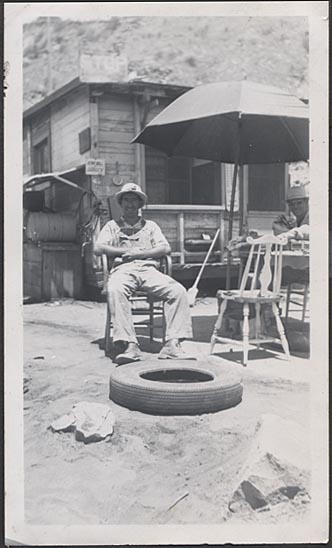
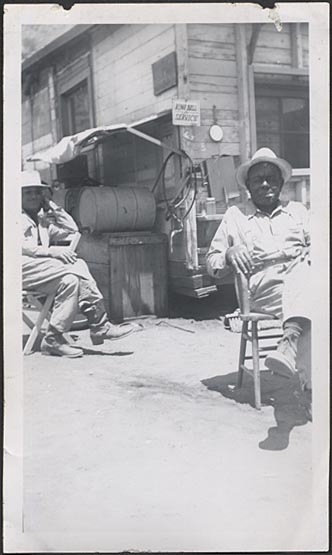
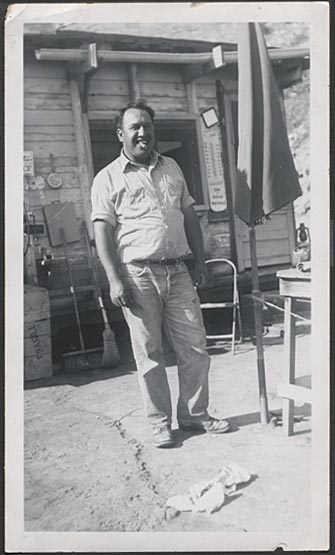
RIP Lionel Ziprin
I have never been arrested. I
have never been institutionalized.
I have four children. I am in
receipt of social security benefits.
I am not an artist. I am not an
outsider. I am a citizen of the
republic and I have remained
anonymous all the time by choice.
In The Function of Criticism, Terry Eagleton (1984) shows that contemporary literary criticism, though it is ensconced in academic domains, tends to be complicit with market forces and the ideologies that support them. He shows that contemporary literary theory, even while it is supposedly anti-authoritarian, is complicit with established structures of power by its epistemological nihilism, its social insulation, its intellectual abstraction from the affairs of everyday life, and its consequent impotence as an effectual form of social criticism. Eagleton's critique of literary theory is comparable to the Frankfurt School's critiques of scientism and positivism that charge that much of scientific inquiry is complicit with systems of domination. These critiques suggest that systems of ideas that attain prominence in intellectual or scientific worlds often tend not to unsettle, if they are not directly complicit with, established structures of power. The compliance of intellectuals with these structures is thus secured without direct coercion.
Formalist art criticism is also subject to this charge. By excluding considerations of idea content and social context, it obscured the substantive concerns that artists frequently sought to express in their works. Thus, while Piet Mondrian wrote extensively on art's role in a dialectical revelation of harmonized oppositions, for example, by reading Clement Greenberg on Mondrian we could learn no more about this than that the artist "has theories" (Greenberg, 1986: 64). Greenberg's disregard of the idea content of Mondrian's art was typical of his approach. Even in cases in which artworks, according to the extensive writings-of artists such as Mondrian (Holtzman and James, 1993) and Wassily Kandinsky (Lindsay and Vergo, 1982), were heavily invested with ideational or affective content, Greenberg evaluated such works only in terms of their formal properties. If he acknowledged the content at all, he gave it short shrift, dismissing it a priori as not pertinent to the value of art.
Bach’s birthday is celebrated on March 21st. around the globe, perhaps even in every time zone. Born fifteen years before the German states adopted the Gregorian calendar in 1700, Bach and his music get their biggest airing on this day, all calendars now properly aligned to play and pay them homage.listen
patterson and the society of usefull manufacturing
Since it seems obvious that I'll have once again to try to free "formalism" from the life-insured mortgage Greenberg has been granted on its very premises,(2) I'll first take his work as an example in order to assert that, notwithstanding what he had to say on the matter (he and several Bloomsbury writers such as Roger Fry and Clive Bell who shared such a silly dream), it is impossible to keep meaning at bay. Then I'll use his work to show that if "formalist criticism" currently has a bad name, it may be because it was not practiced well enough. This will lead me to respond to the charge that formalism equals a- or antihistory (a charge common since the days of Stalin's cultural commissar Andrei Zhdanov and carried to the present: it is the main argument of the "business-as-usual" critic quoted above). All along, I shall try to define the tasks of the type of formalism I have in mind with regard to the practice of its most vociferous enemies.
A word on these enemies, in passing: although they come from different factions, they share an idealist conception of meaning as an a priori construct existing before its embodiment in a form. They all speak, as Roland Barthes would say, "in the name of the Cause." Their idealist conception of meaning combines with an idealist conception of form (as existing prior to its embodiment in matter) in order to insure the apotheosis of the concept of image - an apotheosis whose current symptom is the rise of what is called Visual Studies. It is not by chance that the image was precisely what abstract art struggled against, or that it has been the main target of the Russian formalists in their literary criticism, or that Riegl's groundwork concerned essentially nonmimetic decorative arts, for in the absence of the image one is, or should be, forced to abandon the idealist concept of meaning I just mentioned. The enemies of formalism usually keep away from abstract art for that very reason - but when they occasionally approach it, it is most often in a desperate attempt to retrieve the absent image (business as usual) and thus to negate the historical specificity of abstraction.
With the new century come two new building types: the dead superstore and the dead mall. The dead mall is a victim of economic chill. But dead out-of-town superstores are something else. They're like old skins shucked off by saurian retailers as they gobble up sites and pursue unending growth.
Julia Christensen's book Big Box Reuse examines the lifecycle of these creatures, the far-reaching transformations they bring about in towns and cities, and the waste structures they leave behind. Her research is valuable and timely - the unexpected bonus is that the story is fascinating and lucidly written. When a big box superstore moves into a city, or (as is more common) appears on its periphery, it gives that city a new economic centre of gravity. The sales tax that it raises means that local authorities bend to its will. The thousands of car journeys that it generates can attract other businesses to set up next door. And the fabric of the city warps around it: freeway exits are built, turning lanes implemented.
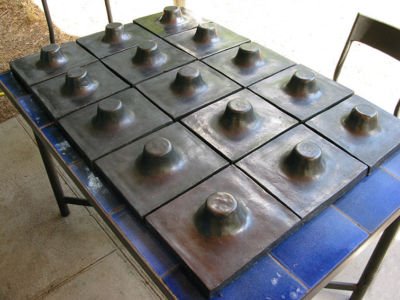
george jouve tiles
Volunteers are learning to rip down plaster, pull apart walls and tear off roofs. To the nonprofit group’s long-held aim of constructing houses for those in need, Saginaw’s affiliate has lately added to its mission by doing the opposite.
As part of an agreement with the city, and with at least $500,000 from the state and federal governments, the Habitat for Humanity volunteers and paid workers plan to demolish two vacant, dilapidated houses here a week, every week, over the next two years. As for creating homes, they will build or refurbish eight houses this year.
The shift in the organization’s focus is a sign of the times in Saginaw, a shrinking city northwest of Detroit where at least 800 houses sit empty and doomed, and offers a glimpse of what increasingly empty neighborhoods in many cities may soon face as foreclosures continue.
The most polarizing issue in architecture today is no longer whether celebrity architects are ruining the profession. It’s what to do with the leftovers of postwar Brutalism.
For an older generation of architects these buildings embody the absolute nadir of the welfare state. Destroying them would be an act of mercy. But for younger architects the aggressive concrete forms that gave the movement its name are a welcome antidote to the saccharine Disney-inspired structures of today. Their demolition amounts to urban shock treatment, an erasure of historical memory that substitutes a sanitized city for a genuinely complex one.
It may be the design world’s best-kept secret: Donald Judd’s furniture doesn’t have to be purchased at auction or ordered through the Judd Foundation in Marfa, Tex., which can take up to a year to deliver. It can be bought at retail prices — and taken home the same day — from Artware Editions, a West Village gallery that carries a rotating inventory. Rebecca Kong, a founder of the gallery, calls it “an affordable way to own something by one of the most influential artists of the 20th century.”
"One of the reasons that reconstruction of earlier playing styles is so difficult is precisely the fact that we start from the viewpoint of late 20th- century taste and habits, and use them as the basis for comparison. But what does modern taste consist of? If the style of Elgar's day is 'old-fashioned', in what ways is modern style 'new-fangled'? The answer...is that we use more vibrato and less portamento than was used earlier in the century, we are more concerned with clarity of detail and exact note values, we take most music more slowly and we change tempo less frequently and to a lesser degree. If these characteristics of modern style have arisen so recently, do we not have to be very cautious in using them as a basis for investigating much earlier playing styles? What would happen if, in order to reconstruct, say, the performance practice of Beethoven's day, we were to start not from modern style but from the style preserved on early gramophone records?
. . . . our conjectures would be quite different if we were living in the 1920s instead of the 1980s. Similarly 18th- and 19th-century descriptions of tempo rubato make a very different sort of sense if we take early, rather than late, 20th-century style as the starting point for comparison. My own very strong suspicion is that many of the habits preserved in early gramophone records had their origins at least as far back as Beethoven, and in some cases earlier. This is something to argue about, but one central point is indisputable: the styles of the early 20th century did not arise overnight. For this reason, if for no other, it is time for historically minded performers to start considering the implications of early gramophone records."
Robert Philip
The Recordings of Sir Edward Elgar -- Authenticity and Performance Practice
Early Music, Vol. 12, No. 4, November, 1984, pp. 481-489, pp.
488-489
96 tears
blood puddle pillows
thx vz
Flubber
In a 1963 tie-in with the Walt Disney movie Son of Flubber, Hasbro developed a product called Flubber, a substance made of rubber and mineral oil that could bounce like a ball and take imprints (similar to Silly Putty). After it had been on the market for several months, the company began receiving reports that Flubber was causing a rash. The Flubber formula had passed all the regular tests, but the company began testing again, this time on volunteer prisoners. One prisoner developed a rash on his head, and the company learned that the product irritated hair follicles of a small percentage of the population.
Hasbro recalled Flubber--thousands and thousands of balls--and consigned it to the city dump. The next day Hasbro execs received a call from the mayor of Providence, who informed them that a black cloud hovered over the dump; the rubber would not burn properly. Merrill Hassenfeld of Hasbro called the Coast Guard for permission to weight the Flubber and dump it at sea. Permission was granted. However, the next day the Coast Guard called to complain that Flubber was floating all over Narrangansett Bay. After paying the Coast Guard to sweep the ocean, Hassenfeld took the mess and buried it in his backyard. (adapted from Toyland)
the new #1 WTC progress (can we quit calling it the freedom tower yet?)
Taking that into account, The Times plans to follow construction (or delays) over the next few years in a series of video reports, beginning with this one. These reports will focus on the big milestones, on the fascinating details that must be resolved, and on the many men and women who are building the new trade center. If you have a few years to spare, stay tuned.
metal p clips
How Iannis Xenakis turned his back on architecture for classical music
poeme electronique
via strange harvest
push back for knee jerk corbu haters
ive been ignoring this news item (because i cant stand venturi). but its hard to resist
a good house moving story with a tugboat, barge and the varrazano bridge in the background.
The museum’s most famous asset is its 9,335-square-foot scale model of New York City, originally built for the 1964 World’s Fair. The Panorama of the City of New York has 895,000 structures, replicating every street, bridge and skyscraper in the five boroughs.who gets the old buildings they replace?
It is the physical and sentimental centerpiece of the museum, located on the old fairgrounds in Flushing Meadows Corona Park, next to the Unisphere, the enormous stainless-steel globe that was also built for the fair and has become an unofficial symbol of Queens.
Now, the museum is beginning an Adopt-a-Building program.
Starting Monday, you can “own” an apartment in the tiny world of the model — say, the one you live in — for $50. A single-family house will cost $250.
And for $10,000, developers can have their brand-new glass-tower condo buildings added to the panorama — no matter how many units are languishing on the market. “Buyers” will even be awarded their own deeds.
Until now, the panorama has represented a snapshot of New York, frozen in time. In 1992, workers updated 60,000 structures to reflect the city’s constant churn of construction and demolition, but it has been untouched since then.
In this miniature world, the World Trade Center still stands, for instance, and the luxury towers now lining the Long Island City and Williamsburg waterfronts are nowhere to be seen.
Now, the panorama will evolve gradually along with the city — at least, for those who pay.
czech book cover design 20's - 30's
10th st co-op galleries
park place gallery
we get blue highway network on basic cable / whottie who who!!! / set your dvr to OCC
Growing up in the Ozark Mountain of Missouri I attended New Hope Baptist Church and New Salem Methodist Church which were both within three miles of our farm in Polk County. These great old country churches gave me a foundation to build a life upon and a lifelong love of the sound that I remember so well of the singing echoing from these historic buildings. The old country churches of my youth were all aged wood and gave a resonance of the human voice that could never be duplicated in a modern recording studio. Back in 1992 I started looking for an old country church to produce a television show to feature the authentic sound of music inside those old wooden buildings. In 1993 my lifelong friend and fellow gospel music lover, Bobby Joe Bilyeu (pronounced BLUE) found the perfect church. It is located in the Heart of the Ozarks just 8 miles outside of Springfield, Missouri. As noted earlier, I grew up on a farm just 13 miles from Springfield, but in the other direction so I had never heard of this church. It is the historic Cave Springs Church in the community of Cave Springs, Missouri. It was built in the mid 1860's and had been empty for many years when we found it. We were able to take our production crew in and clean it out, repair and paint the inside and paint the outside. It is a beautiful old church and from the first group that we brought in to sing, back in 1994, the sound of that old wood was just spectacular. People all over the country watched our "Old Country Church" shows and our "Gospel Sampler" shows that were produced in the old church and just loved it. It has been our most popular show of all the shows we have produced through the years, along with "Reno's Old Time Music Festival" and my "Stan Hitchcock's Heart to Heart" shows.
Reno and I, along with our wonderful production crew just returned to Nashville from our trip to Cave Springs, Missouri where we produced ten (10) new "Old Country Church" shows with some of the greatest [WHITE] gospel groups in America. I couldn't wait to get back and give you, our BlueHighways TV fans and supporters, the chance to hear the raw, unedited samples of the new shows.
Stan

langston hughes ask your mama
illy push button house
thx drat
master plan
hollis frampton interview
80 michigan breakwater / lock images
This lantern slides measures 3.25 in by 3.25 in.
Hand titled on paper label - Corbusier. . Paris. Jeanneret. Maison la Rute?
This old lantern slide is one from a collection of photographic slides showing modern architecture. Many of the slides have paper labels reading - Courtauld Institute of Art, a few read Barteltt school of Architecture and Architectural Association. Some are only titled. Some show buildings and interiors by famous architects such as Frank Lloyd Wright, Le Corbusier, Charles Renee Macintosh, Schinkel, F.R.S Yorke and others in England, France Australia, America, Italy and more. Some are dated 1930s / 1940s, others have written - No Neg.
ORIGINAL PHOTOGRAPHS OF THE MESS RESIDENCE OF WINNETKA DESIGNED AND BUILT BY WALTER BURLEY GRIFFIN, IT WAS FEATURED IN THE "WESTERN ARCHITECT MAGAZINE AUGUST 1913. THIS AUCTION INCLUDES 46 PHOTOS.
4 EXTERIOR PHOTOS UNDER CONSTRUCTION, 1 PHOTO OF A SURVEYING CREW WHICH MAY INCLUDE GRIFFIN IN THE PHOTO.5 INTERIOR VIEWS INCLUDING THE FAMOUSE FIREPLACE. THE BALANCE ARE VARIOUS VIEWS OF THE HOME AND GROUNDS OVER THE FOLLOWING YEARS. SOME HAVE MATURE LANDSCAPING.ALSO INCLUDED IS THE PAGE FROM THE MAGAZINE. ALL PHOTOS ARE ORIGINALS.
But to use an analogy that this poker player would understand, Mr. Gagosian is all in. He showed up at the Yves Saint Laurent auction in Paris last month, accompanying the Russian billionaire Roman A. Abramovich. Mr. Gagosian is still on the cocktail circuit, and he’s still hosting parties in his town house on the Upper East Side, which has a lap pool and lots of sleek furniture. The gatherings — a mix of millionaires, celebrities and art stars — are carefully engineered marketing opportunities, though they don’t seem that way to attendees.
Four years ago at Davos, the famous world economic forum, then-Prime Minister Tony Blair appeared on a panel with Bill Gates, Bill Clinton and the rock star Bono. After the panel, a journalist wandering the stage came across some papers scattered near Blair's seat. The papers were covered in doodles: circles and triangles, boxes and arrows.
"Your standard meeting doodles," says David Greenberg, professor of journalism at Rutgers University.
So this journalist brought his prize to a graphologist who, after careful study, drew some pretty disturbing conclusions. According to experts quoted in the Independent and The Times, the prime minister was clearly "struggling to maintain control in a confusing world" and "is not rooted." Worse, Blair was apparently, "not a natural leader, but more of a spiritual person, like a vicar."
Two other major British newspapers, which had also somehow gotten access to the doodles, came to similar conclusions.
A couple days later, No. 10 Downing Street finally weighed in. It had done a full and thorough investigation and had an important announcement to make:
The doodles were not made by Blair; they were made by Bill Gates. Gates had left them in the next seat over.
andy warhol's tv
goldsmith >>>Oh fuck, let them, let them! Oh geez let them who cares! We have nothing to lose. I mean who cares. Like I said there should be many more of those. Who gives a shit! None of it matters. It's like punk rock. It's like punk rock. Who gives a shit, we'll burn tomorrow. We're not in it for--there is no future plan for it other then for it just to grow and become much better. Now somebody could just come in and say, "I want to take the site and have my staff go through and permission everything. We'll contact people. We'll pay people. We'll permission. We'll do the whole thing. Come on board we'll get the whole thing legit. We'll give you a salary and you'll keep directing it." At that point I don't know. But as that stands now it's a little bit of a joke.
Google scanning books? There's ulterior motives there man. It's sort of cool, but it's sort of not. I mean they're not doing it to benefit humanity. They're not practicing utopian politics. And I think the publishers have every right to be suspicious. You know, this is a huge corporation; they've got something else in mind. And again it's that other scale of economy that doesn't have anything to do with us really. And believe they ain't going to be scanning books that were produced in editions of one hundred that make absolutely no sense--guarantee! They ain't going to be scanning little books of Lyn Hejinian language poetry--I guarantee it.
vito acconci 1973 with willoughby sharp
more
One of the strangest stories in modern architecture is that of Le Corbusier’s obsession with a villa (modernistically named E 1027) by the Irish designer Eileen Gray at Cap Martin in the south of France.
Gray was a hugely talented but little-known designer whose reputation today far outstrips the one that she had during her career. (As if to underline how far, last month an armchair by Gray fetched an astonishing €22m [$28bn] at the Paris auction of Yves Saint Laurent’s collection.) Le Corbusier was the most famous and influential architect of the century. Yet Le Corbusier was so drawn to Gray’s villa that, after staying there, he returned to the site to build himself a cabanon, a retreat or hut of the most elemental kind.
A replica of that hut now stands in the loft of the Royal Institute of British Architects, the Art Deco Florence Hall. But it is a strange object. Reproducing the interior only, it appears as a blind black box, its creators – the Italian furniture manufacturer Cassina – having apparently decided that the log cabin non-aesthetic of its exterior was somehow unnecessary.
This seems odd to me, as it embodies such an obvious, if subconscious, memory of Le Corbusier’s Swiss roots. Entering the tiny space feels a little like walking into a fun-fair ghost house and, indeed, it reveals a space haunted by the contradictory dreams of modernism.
Le Corbusier, imaginer of a world of towers in parkland, of elevated walkways and endless freeways, of the destruction of central Paris to create boulevards of terrifying but monumental banality, and inspirer of the worst high-rise housing in the world, built his primitive hut in 1952.
the warhol econcomy
andy died in 1987 and took this socio/ecco/cultural model with him
TV and its role in popularizing modernism in America (this is a huge overstatement)
What does it mean to destroy a building? How do we read a damaged version of Le Corbusier's Villa Savoye at Poissy? For architecture historian Andrew Herscher, destruction is a type of language, a "form of design" that is "at least as significant as any of the elements from which buildings are constructed for living, for the living." [1] But let us take this further. If a building calls attention to itself when it has ceased to exist, is there a middle ground, an intermediate representational stage that not only forecasts a language of destruction, but that also evokes the purely conceptual urgings that inspired the design of the building in the first place?detroit
More recently at 7 World Trade Center there were constraints and requirements such as making the electronic wall blast proof, and this slowed me—constructively. I could think more about how the piece should look and about what content it should offer for this tragic but optimistically restored site.The newest complicated sculptural LED arrays require that I try to marry form, function, information, beauty, time, transcendence, realism, legibility, phantoms and more—and then make sure the stuff works. It’s routine for function or lack thereof to affect the look, for the look to demand better function, for the shape to change content, for the content to require different colors, for the programming to need more speed, and around we go. But I attend to what has failed in the course of the electronics and then use what has come to be right. Sometimes it’s a relief these days to make the silk-screened paintings that are relatively simple to produce.
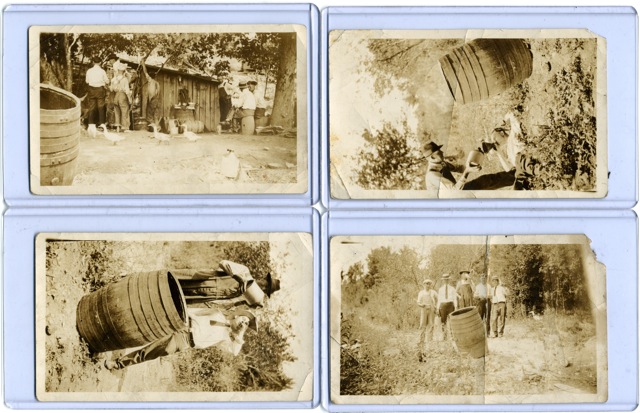
untitled (still men) bill schwarz 2009
aaron used equipment bensonville ill
via nightly business report
spaceinvading archscraperegator
studio silja rantanen
via bellostes
george ohr cup and saucer
tidy barn conversion
god will fuck you up
thx vz
history of bucks county pennsylvania
Red Hot Alethx ed tringali
Adapted from L’Ecole at the French Culinary Institute
3 ounces amber ale
1 ounce Cognac
1/4 ounce simple syrup
1/4 ounce lemon juice
3 dashes orange bitters
Dash of salt
Heat a clean fireplace poker — an old, seasoned one is best — in the hot coals of a fire until glowing. Combine all ingredients in a mixing glass, then carefully lower the red-hot tip into the glass. If the poker is hot enough, the alcohol will spontaneously ignite. Don’t fret too much if ignition doesn’t occur — you’ll still get the caramel-like flavor. Hold the poker there until the boiling begins to subside, then remove the poker and serve immediately.
Yield: 1 serving
the beacon beckons
new old barns
yestermorrow
thx re
vinalhaven contemporary cape / old harbor views 395k
50k reading house
another place in reading
color mixable tool dip aka plasti dip
sales

PERKIOMENVILLE PA /
MAKE AN OFFER - Solid stone 3-sty colonial (1778) with new roof & windows. Interior needs rehab, selling as is. Village commercial zoning offers possibilities for professional/business opportunities. Frontage on Rt. 29 & Perkiomenville Rd. $150,000
Design and the Depression, The Debate: Part One
Is there an upside to the recession? Quite a few people seem to think so. David Goodhart, editor of Prospect magazine, hopes for a good recession in which only rich bankers will be laid off, and the effects of which will be largely ‘cleansing’.
The design version of this argument would have Zaha Hadid, Ross Lovegrove, Marcel Wanders, and Campana Brothers canned; and a moral reawakening would replace stylistic decadence. With echoes of the early-Nineties, designers are again beating themselves up over their supposed excess. Back then, they regretted the superficiality of Eighties’ Post Modernism and the matt black and chrome-trimmed Yuppie lifestyle. Today, outlandish architecture and design-art are placed alongside Damien Hirst’s Diamond Skull and the Candy and Candy’s apartments as symptoms of empty extravagance.
But the Bring-On-The-Slump crowd are equally self-indulgent. Recessions are marked by bankruptcies, mass unemployment, house repossessions and general misery, not by moral renewal. A mean-spirited Puritanism lies behind those beckoning recession.Their outlook reveals a shocking detachment from economic and historical realities. The recessionistas just don’t get it, they have not grasped the depth of the economic crisis we face. This is no mere downturn, blip or ‘natural correction’; it’s a process that will last years. It could inflict a terrible toll on the profession. No doubt these commentators come from the kind of backgrounds that weren’t blighted by previous busts, but few practising designers and architects will be able to maintain such glorious indifference in the face of the coming havoc.
bauhaus at 90
At first Gropius had attempted to reinsert a soul into the industrialized era, with his belief in the importance of the trades and his preference for wood as a material which harked back to the builders' huts of the Middle Ages. However, the director quickly shed these initial notions and his idealization of the past. He still condemned pure art as an end unto itself, and he continued to refuse to produce "luxury items for connoisseurs." But he also began to vehemently propagate architecture and product design tailored to the possibilities of industry.
In 1923, he proclaimed the motto: "Art and Technology -- a New Unit." The master of the Bauhaus demanded speed, wanting to overcome "earthly sluggishness." He complained that some Bauhaus members preferred a "return to nature, preferring to shoot with a toy bow instead of a shotgun."
The old belief in the power of the machine from the prewar days had been reawakened. And it triggered a heated debate over what direction the Bauhaus should be going in. One of the skeptics was Bauhaus master Georg Muche, who refused to enter into a "compromising relationship" with the "world of form, devoid of meaning" in the outside world. Kandinsky, the Russian genius who had helped found abstract art, was also troubled by the fact that "the machine" had been elevated "to idolatry."
Form and function, production and marketing: everything was reinvented from the ground up. "New" was the buzzword of the hour: new building, new vision, the New Man.
The concept of "style" was also controversial within the institution, and yet it existed, of course, -- the unmistakable Bauhaus style. Freed of all flourishes, this minimalist vocabulary of form was an intelligent, democratic understatement. Since then, the mythology of modernism has included the flat roof, the functional logic of a chair and the matter-of-factness of a metal teapot.

